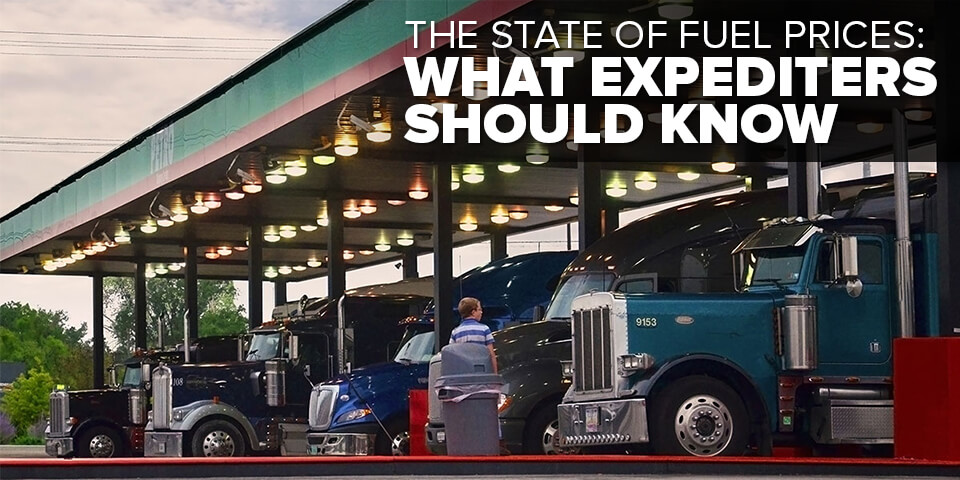Dollars & Sense

The State of Fuel Prices: What Expediters Should Know
As of press time, the national average price of gasoline is $2.87 a gallon, up 49% from $1.92 a year ago, according to the AAA, when the pandemic lockdowns were in full force, stifling fuel consumption.
Diesel is $3.08, up 20% from $2.56 this time last year.
And several industry analysts believe gas prices could reach $4.00 a gallon in some states by summer. California, the most expensive market, is already at $3.92.
With fuel being one of your biggest expenses as an expediter, higher prices at the pump mean lower profit in your pocket.
So, what’s driving the recent surge in fuel prices? Here are three factors to watch.
1. Post-pandemic recovery.
Today’s sticker shock at the pump might have more to do with comparisons to last year’s historically low fuel prices than what would have been typical if we hadn’t been in the middle of a pandemic with global economic lockdowns that lasted for several weeks.
At one point, oil prices fell by more than $50 a barrel in a single day last April -- to less than zero.
Until recently, most workers who could work remotely did not commute to the office, continuing to dampen fuel demand.
So, for nearly a year, we’ve had a market dynamic that has suppressed fuel usage - and, thus, fuel prices.
But as states have begun to lift COVID restrictions, this means increased travel, more people commuting to the office, and greater fuel demand, driving up the price at the pump.
2. Severe weather.
In February, the severe winter storm that struck Texas temporarily shut down some of the nation’s biggest oil refineries, dragging gasoline and diesel fuel supply below normal levels for March.
And increased fuel demand plus reduced supply usually results in higher prices.
Also, as the hurricane season approaches, beginning in June, watch for potential impacts to U.S. refineries in the Gulf that could sustain the rising fuel price trend through the summer.
3. Global events.
According to The New York Times, the Organization of the Petroleum Exporting Countries (OPEC) and allied producers like Russia surprised many analysts this month by keeping several million barrels of oil off the market. OPEC and its partners are pumping roughly 780,000 barrels of oil a day less than at the beginning of the year despite prices rising by 30% in recent months.
Why is OPEC limiting production to boost prices?
The Times quotes René Ortiz, a former secretary-general of OPEC who is now Ecuador’s energy minister, who said: “The discipline to support higher prices is needed for the recovery of their economies.”
In other words, the OPEC member countries need to sustain higher oil prices right now to make up for the substantial revenue drop from this time last year to balance their budgets and service their debts.
Then there’s the fallout from the recent Suez Canal incident where a massive cargo ship lost control and got lodged into the side of the waterway, blocking traffic for several days and forcing major shippers to change course.
Reports say that the blockage affected 10% of the global crude oil supply.
As Ben Winck with Business Insider put it, “The recovery from the coronavirus pandemic was almost certain to lift oil prices anyway, but this sudden shock stands to make them climb higher. The world's most-traded commodity plummeted at the start of the health crisis and traded at historically low levels for months as demand failed to rebound, then started to bounce back in November and stabilized at pre-pandemic highs with economies on the verge of reopening.”
The Bottom Line
At least for the foreseeable future, as fuel demand continues to increase, so will the price at the pump. A critical factor that could help stabilize prices will be an increase in fuel supply. Will OPEC and its partners boost production? What about the U.S.? Will the U.S. get oil production back up to pre-pandemic levels?
Watch this space for new developments.
